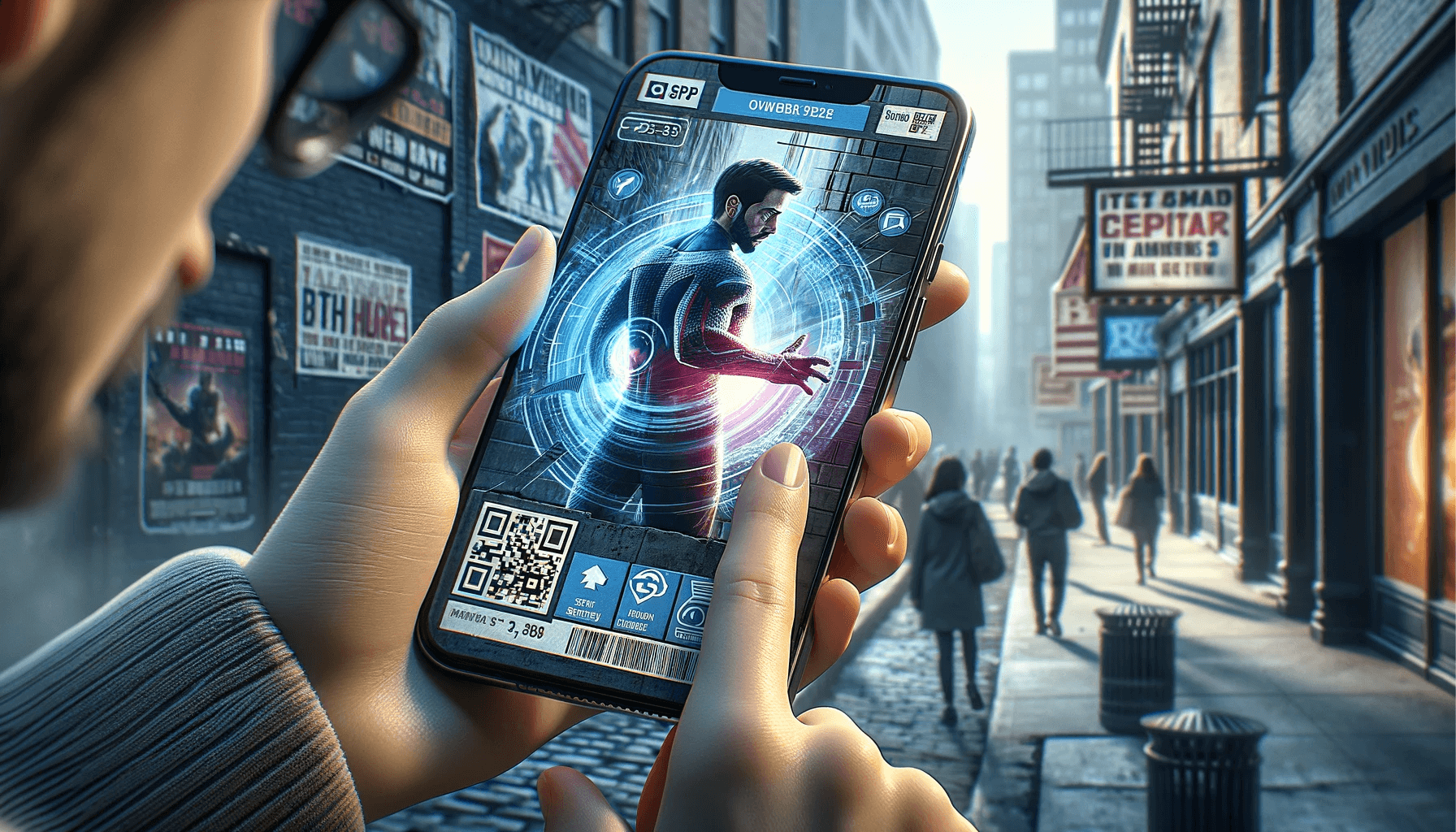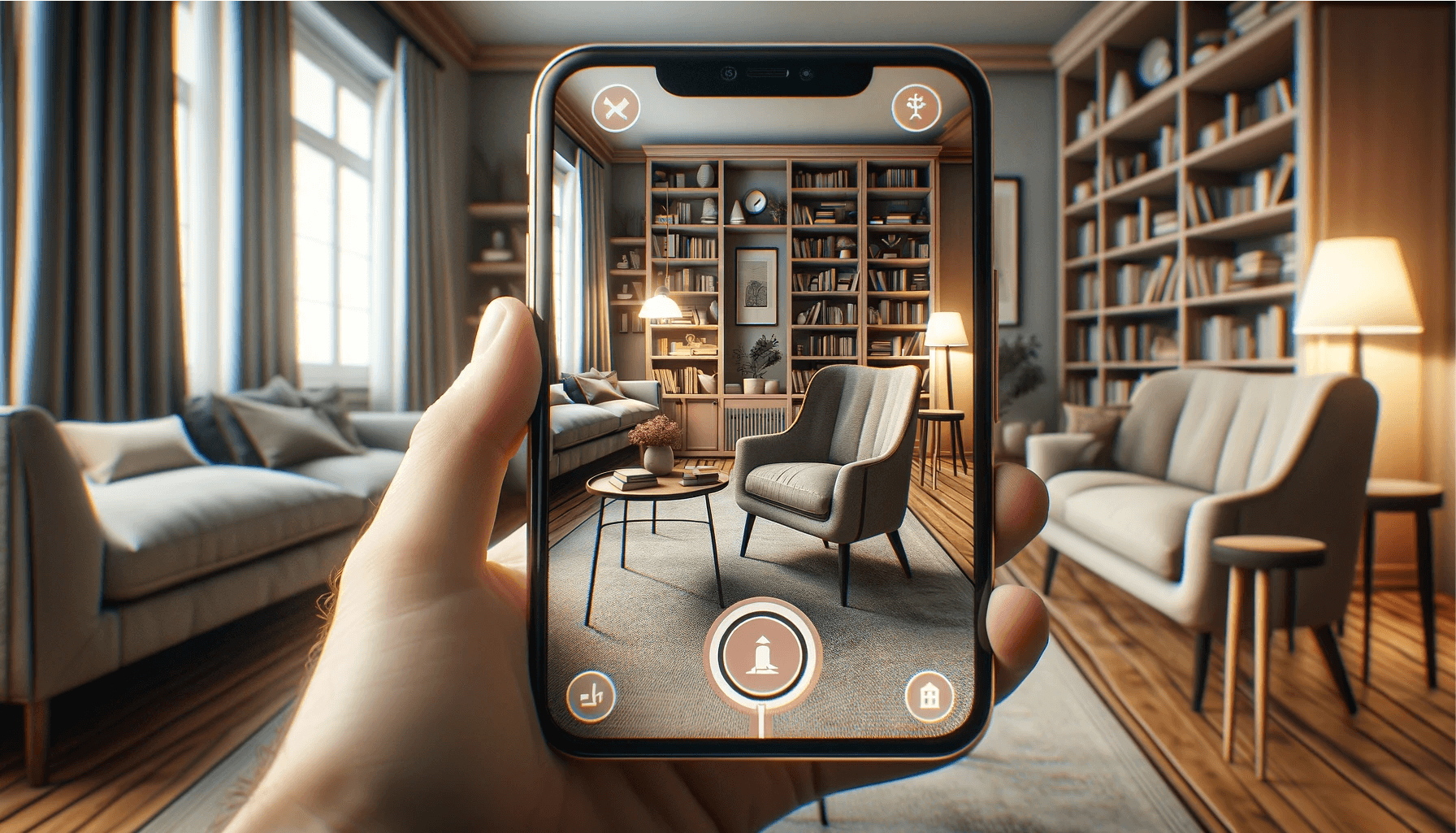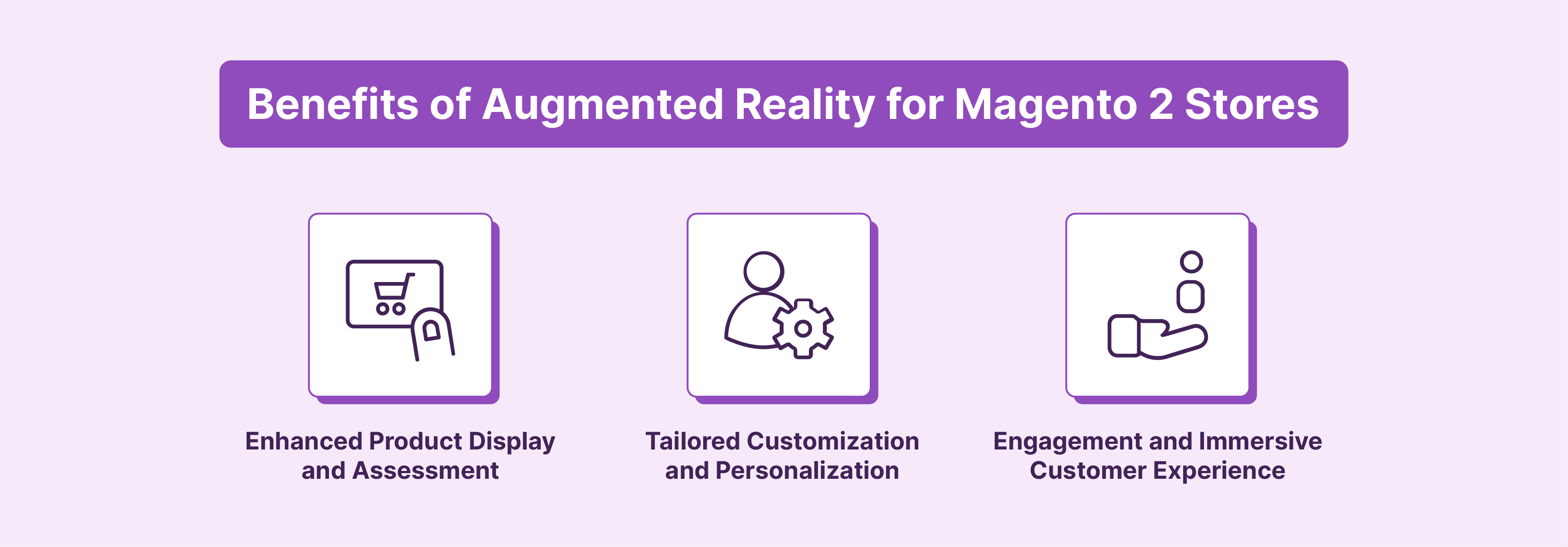
Magento Augmented Reality: Challenges and Future Trends
Magento augmented reality enhances customer shopping by allowing customers to visualize products. Buyers can now effortlessly visualize products within their environments by leveraging their smartphones or other AR-enabled devices. It increases customer engagement and provides a more immersive shopping experience.
This guide will cover augmented and virtual reality and how it helps Magento 2 stores. It also highlights the benefits and provides insights into future ecommerce trends.
Key Takeaways
-
Discover Augmented Reality (AR) for an immersive shopping experience for Magento 2 stores.
-
Explore the distinctions between Virtual Reality (VR) and AR.
-
Learn how Marker-based AR, Markerless AR, and various types cater to different ecommerce needs.
-
Understand the benefits of AR for Magento 2 stores for boosting sales and satisfaction.
-
Explore the advantages of Virtual Reality for Magento 2 stores to gain a competitive edge in the market.
-
Identify challenges in adopting AR/VR for Magento 2 stores.
-
Learn about future advancements in AR to ensure innovative and scalable Magento experiences.
-
Discover considerations before implementing AR/VR on Magento 2.
What Is Augmented Reality (AR) in Magento 2?

Augmented Reality (AR) is a technology that blends digital elements, like images or 3D models, with the real world through devices such as smartphones or smart glasses. It offers an immersive Magento 2 experience. It enables users to interact with virtual objects overlaid onto their physical surroundings in real time. AR enhances understanding and engagement and is widely used in various sectors like gaming, education, ecommerce, and healthcare.
This interactive capability of AR allows customers to explore ecommerce products thoroughly, ask questions, and gain a comprehensive understanding before making a purchase decision. It helps boost sales and enhances overall Magento customer satisfaction.
What Is Virtual Reality (VR) in Magento 2?

Virtual Reality (VR) is a technology that creates a simulated environment completely separate from the real world, using computer-generated imagery and sensory feedback. Users immerse themselves in this artificial environment through specialized equipment. It includes VR headsets or goggles, which block out the physical world and replace it with a digital one.
VR enables users to interact with and explore this virtual ecommerce store as if it were real, providing a deeply immersive experience. Unlike augmented reality (AR), which overlays digital elements in the real world, VR transports users to entirely virtual environments.
While AR enhances the real-world environment by adding digital information, VR creates a fully synthetic world that users can interact with independently of their physical surroundings.
| Feature | Virtual Reality (VR) | Augmented Reality (AR) |
|---|---|---|
| Environment | Fully computer-generated | Real-world with digital overlays |
| Immersion | High level, simulates alternate reality | Lower level, enhances real-world experience |
| Devices | Mainly VR headsets | Smartphones, tablets, AR headsets, smart glasses |
| Applications | Gaming, entertainment, education, training, simulations | Gaming, education, navigation, design, maintenance, retail |
Types of Augmented Reality
1. Marker-based AR

This type uses physical markers, like QR codes or images, to trigger digital information display. When the camera detects the marker, it overlays digital content onto the real world. These digital elements remain fixed to the marker's location and move along.
Marker-based AR is relatively easier to develop and offers stable tracking. It finds extensive use in ecommerce marketing, advertising, and interactive learning. The types include:
-
QR codes/Barcodes: Visual markers triggering AR experiences when a device camera scans. Widely used in marketing, advertising, and retail to launch AR content.
-
Product Packaging/Logos: Distinctive packaging or logos activating AR content, enabling users to interact with products and visualize additional information/features.
-
Image Targets: High-contrast images with unique features serving as custom markers for AR experiences. Ideal for interactive print materials like books, brochures, and posters.
-
3D Objects: Real-world 3D objects are markers for precise AR visualizations and animations. Valuable for training simulations, assembly instructions, and maintenance procedures.
2. Markerless AR

Markerless augmented reality functions without physical markers. It relies on device components like cameras, sensors, GPS, and algorithms. It helps to map environments and identify surfaces/objects for anchoring digital content. This content is overlaid onto the physical world based on the gathered data.
Markerless AR offers flexibility as digital elements are not bound to specific markers, allowing users unrestricted movement. It finds applications in popular apps like Pokemon Go, mobile games, retail, marketing, and navigation. The types include:
-
Spatial Augmented Reality (SAR): This form directly projects virtual images onto physical environments without requiring special glasses or headsets. It uses advanced projection mapping, spatial computing, and display technologies. SAR delivers immersive AR experiences on a large scale, transforming entire rooms or spaces. It is used in various sectors, such as medical, industrial design, education, and art installations.
-
Mobile Augmented Reality (MAR): It is Implemented on smartphones and tablets using their cameras, sensors, and computational capabilities. MAR overlays digital information and objects onto real-world environments viewed through mobile device screens. It facilitates widespread access to AR content and is heavily employed in gaming, retail, marketing, and other sectors.
-
Head-Mounted AR (HMAR): AR is presented through special glasses or headsets featuring transparent lenses in front of the user's eyes. This hands-free AR usage is particularly suited for specialized enterprise applications. Leading products in this category include Microsoft HoloLens and Magic Leap. It is used in medical, industrial, and defense sectors requiring mobility and hands-free operation.
Benefits of Augmented Reality for Magento 2 Stores

1. Enhanced Product Display and Assessment
Online stores often struggle to provide adequate product visualization compared to physical retail outlets. Customers may not fully grasp a product's appearance, even with high-quality images. AR solves this problem by offering realistic visualizations, allowing customers to view Magento products from different angles and understand how they look.
AR enables customers to interact with products through animations and dynamic visualizations, providing a virtual test-drive experience. For example, Ray-Ban utilizes AR and face-mapping technologies to let customers preview glasses virtually. It helps them see how they look on their faces before purchasing.
2. Tailored Customization and Personalization
AR facilitates product exploration and customization in real time, allowing customers to modify product attributes such as color, dimensions, and shape. This level of customization is difficult to achieve in physical stores. Certain product models may be out of stock or require custom orders.
This capability is particularly beneficial for furniture manufacturers. For example, Ikea's AR-powered application, Ikea Place, lets buyers visualize furniture pieces. It allows customers to place them within their actual homes visually.
3. Engagement and Immersive Customer Experience
AR significantly impacts customer experience by providing immersive interactions with products and surroundings. This technology allows buyers to engage with products novelly, creating a more enjoyable shopping experience.
It also facilitates a personalized approach, leading to higher Magento conversion rates and increased customer loyalty.
For instance, Sephora leverages AR technology through its Virtual Artist app, which enables users to apply makeup products to their faces virtually.
Advantages of Virtual Reality for Magento 2 Stores
1. Virtual Showroom Experience
With VR technology, customers can immerse themselves in a virtual mall environment, replicating the feel of shopping in a physical store. Customers can explore virtual spaces using cardboard VR headsets and mobile phones. This immersive experience encourages prolonged engagement and stimulates increased shopping activity.
2. Extended Customer Engagement
Traditional online shopping experiences can feel mundane, leading to quick browsing and premature cart abandonment. However, VR's 360-degree video capabilities offer a solution by providing an immersive and captivating experience. VR also eliminates barriers like high product pricing and poor website navigation, ensuring a seamless shopping journey.
3. Competitive Edge
You are committed to providing exceptional online shopping experiences by integrating VR technology into your Magento store. This proactive approach sets you apart from competitors and positions your store as a pioneer in leveraging cutting-edge technology. Gaining a competitive edge in the market attracts more customers to your store. It helps drive sales growth and market expansion.
4. Personalized Recommendations
VR technology enables highly personalized shopping experiences by delivering tailored product recommendations based on customer preferences. By leveraging VR's immersive capabilities, customers receive curated product suggestions aligned with their interests and needs. This personalized approach saves customers time and effort while boosting satisfaction and loyalty.
Challenges in Adopting AR/VR for Magento 2 Stores
1. Technical Challenges
-
Performance Issues: AR/VR experiences can strain devices and networks, leading to performance issues such as lag or crashes. Ensuring smooth operation across various devices and network conditions is important for a satisfactory user experience.
-
Cross-Device Compatibility: Achieving consistent AR/VR experiences across different devices with varying capabilities poses a significant challenge. Ensuring compatibility and optimization for various devices is essential to reach a broader audience.
-
Integration Complexity: Integrating AR/VR functionalities into existing ecommerce platforms like Magento can be complex and time-consuming. It often requires substantial Magento customization and may incur additional costs for development and maintenance.
2. Business Challenges
-
High Development Costs: Developing high-quality AR/VR content and experiences demands substantial technological expertise and resource investment. The cost of creating immersive experiences can be prohibitive for many businesses, especially small-to-medium enterprises.
-
Measuring ROI: Quantifying the return on investment (ROI) for AR/VR initiatives can be challenging. The intangible nature of enhanced user experiences makes it difficult to accurately assess the impact on sales, conversion rates, and customer engagement.
-
Limited Customer Adoption: Many consumers hesitate to embrace new technologies like AR/VR despite the potential benefits. Overcoming skepticism and encouraging widespread adoption among target audiences is a significant business hurdle.
3. User Experience Challenges
-
Hardware Discomfort: AR/VR headsets can be bulky and uncomfortable for extended use, detracting from the overall Magento user experience. Ensuring ergonomic design and minimizing physical strain is essential to promote user comfort and satisfaction.
-
Simulation Sickness: Some users may experience motion sickness symptoms, such as nausea or dizziness when using AR/VR applications. Addressing factors contributing to simulation sickness, such as motion latency and field of view, is critical for minimizing user adverse effects.
-
Privacy Concerns: Collecting user data for AR/VR experiences raises privacy concerns and prompts questions about data usage and security. Maintaining transparent security practices and implementing Magento privacy measures are essential to protect user privacy and build trust.
Future Advancements Driving Innovation in Augmented Reality (AR)
1. AI and Computer Vision
Artificial intelligence (AI) and computer vision technologies help augment AR capabilities. Machine learning algorithms and neural networks enable precise tracking of environments and objects, facilitating realistic interactions between virtual and real-world elements. For instance, computer vision techniques accurately map room surfaces, lighting conditions, and textures. It enables virtual objects to integrate into physical spaces seamlessly.
AI-driven breakthroughs in object recognition and depth perception enhance the accuracy of AR overlays, ensuring consistent and stable user experiences.
2. Connectivity and Processing Power
5G networks and WiFi 6 are revolutionizing mobile device connectivity for advanced AR experiences. Faster data speeds and reduced latency enable complex AR functionalities like cloud rendering. It helps graphically rich content stream from the cloud to alleviate strain on local device processors.
Chipmakers are also developing more powerful, energy-efficient mobile processors optimized for AR workloads. These advancements and cloud rendering empower smartphones and tablets to deliver desktop-quality AR experiences.
3. Display Technology
Optical and projection systems for AR displays are rapidly advancing. Companies are developing projection solutions capable of overlaying sharp, high-resolution AR imagery. Technologies like microLED displays enable the creation of sleek AR glasses that resemble traditional eyewear.
Next-generation AR headsets with transparent microLED panels and holographic optics promise compact form factors suitable for mass adoption. Lightweight and stylish designs enhance user comfort during prolonged AR usage, increasing acceptance and adoption.
4. User Interface Design
Gesture recognition, voice commands, and spatial tracking technologies enable natural interactions with virtual elements in AR environments. Innovative interface designs prioritize simplicity and accessibility.
It ensures seamless navigation and interaction within AR applications. These enhancements cater to diverse user preferences and improve overall usability. It enhances the appeal and effectiveness of AR solutions.
5. AR Cloud Infrastructure
The development of AR cloud infrastructure is revolutionizing the scalability and persistence of AR experiences. AR cloud platforms enable the creation, storage, and sharing of spatial data, facilitating seamless synchronization of virtual content across devices and environments.
It enables persistent AR experiences, where virtual objects persistently anchor to physical locations over time. AR cloud infrastructure paves the way for collaborative AR experiences, location-based services, and immersive gaming applications.
Considerations Before Implementing AR/VR on Magento 2
-
Platform and Software Compatibility: Ensure the Magento 2 platform is compatible with AR/VR software. The software should seamlessly integrate with the existing catalog and Magento extensions. It should also support the latest versions of Magento (Adobe Commerce). This compatibility is crucial for maintaining a stable e-commerce environment.
-
Product Page Integration: Integrating AR/VR requires modifications to product pages. It includes adding AR viewer icons and QR codes. These elements allow shoppers to view items in 3D or virtual space. Each product page must support 3D models and their files, such as GLB for AR and USDZ for iOS devices.
-
Device and Browser Support: The AR/VR experience must be accessible across various devices and browsers. It includes ensuring functionality on iOS and Android and popular browsers like Safari, Chrome, and Firefox. The aim is to cover a broad spectrum of shoppers, enhancing accessibility and Magento user experience.
-
Admin and Merchant Considerations: Admins and merchants need the right tools and knowledge to manage AR/VR content. It includes understanding how to upload 3D model files, configure viewer settings, and update product specifications. Training may be necessary to bridge the knowledge gap in these new technologies.
-
Customer Experience and Engagement: Consider how AR/VR will enhance the shopping experience. AR/VR should give shoppers a sense of certainty and confidence in their purchase decisions. It should also offer options for product customization and personalization, enriching the customer’s interaction with the product.
-
Technical Requirements and Installation: Assess the technical requirements for AR/VR integration. It involves checking the server's ability to handle increased loads due to AR/VR files and ensuring sufficient bandwidth. Installation of specific modules or Magento plugins may be required. The process should be handled carefully to avoid disruptions.
-
Content Creation and Management: Creating and managing AR/VR content is a significant consideration. Retailers must account for the creation of 3D models and their variants. Each item in the catalog requires a detailed 3D representation. This effort can be resource-intensive but is important for a compelling AR/VR presentation.
-
Legal and Privacy Issues: Address legal and privacy concerns related to AR/VR. Collecting and processing data through AR/VR applications must comply with privacy laws. Merchants should ensure that customer data is handled securely and transparently.
-
Cost and ROI Analysis: Consider the cost of implementing AR/VR against the expected return on investment (ROI). While AR/VR can increase engagement and sales, it requires a significant upfront investment. Merchants should evaluate whether the benefits align with their e-commerce strategy and budget.
-
Feedback and Reviews: Gathering feedback and reviews from early AR/VR adopters can provide valuable insights. These insights can help refine the AR/VR experience, address shortcomings, and better meet customer expectations.
FAQs
1. How can I integrate AR functionality into my Magento 2 store?
You can utilize a suitable AR extension compatible with your Magento version to integrate AR functionality. Once installed, configure the extension in the admin area to enable AR features on product pages.
2. What file formats are supported for the 3D models in AR?
The AR functionality supports GLB files for 3D models. Ensure that your product catalog includes the necessary GLB files to enable a seamless AR experience for your customers.
3. Can I customize the appearance of the AR button on my product pages?
Yes, the AR button's appearance can be customized to align with your store's aesthetic. Access the extension's configuration area in the Magento admin panel to modify the button's size, color, and icon according to your preferences.
4. How does the AR extension handle different product categories in Magento?
The AR extension is designed to work seamlessly with various product categories in the Magento store. Each product category can have specific AR details and configurations, providing flexibility based on your e-commerce needs.
5. Is the AR module open source, and does it support the latest Magento version?
Yes, the AR module is open source, and verifying its compatibility with the latest Magento version is important. Ensure you have the AR module's appropriate version to benefit from the latest features and improvements.
6. Can I use AR with QR codes for product visualization?
Yes, you can enhance customer interaction by incorporating QR codes. Attach QR codes to your products; they trigger AR experiences when scanned. It is an effective way to engage customers and provide additional product details.
7. How can I add the AR icon to my product images by default?
Access the configuration area to make the AR button a default option in your product images. Set the AR button as a default choice for product images. It helps ensure a consistent and streamlined AR experience for your customers.
Summary
Magento augmented reality ensures an enriched customer shopping experience by seamlessly integrating augmented reality (AR) features. Customers can visualize products within their surroundings, enhancing engagement and understanding before purchasing.
This guide explored augmented and virtual reality and their impact on Magento 2 stores. It provided benefits, types, and future advancements. Explore optimal Magento server hosting solutions to ensure seamless integration of augmented reality features on your e-commerce platform.


